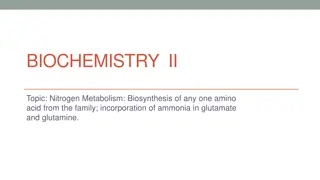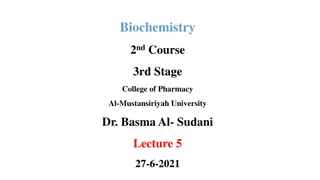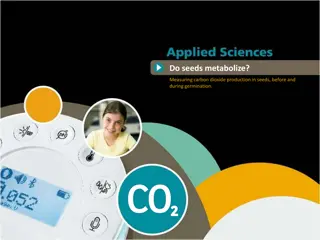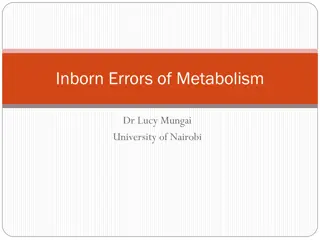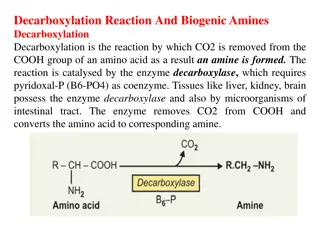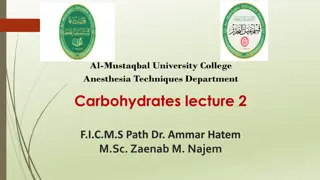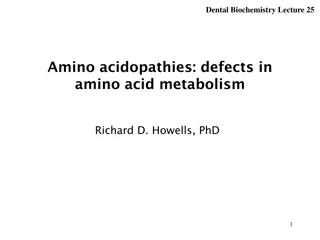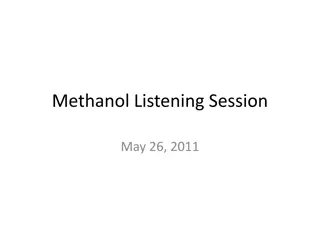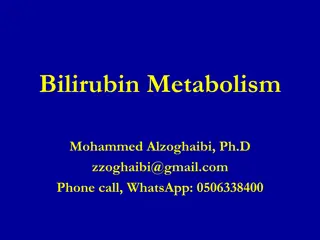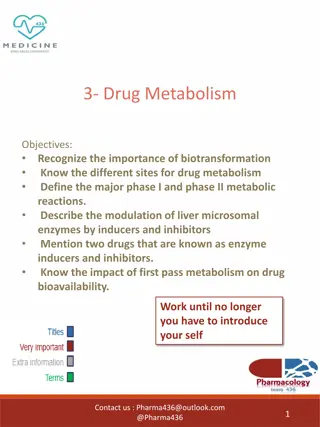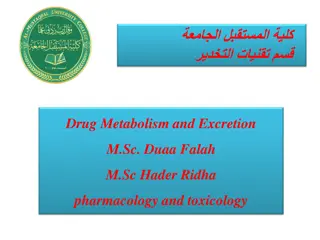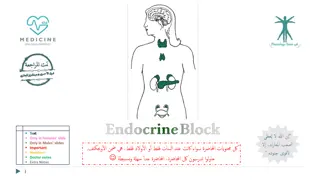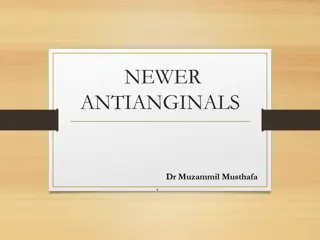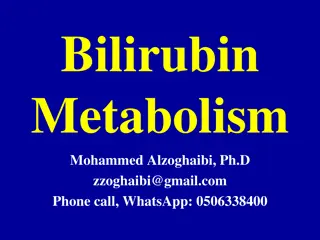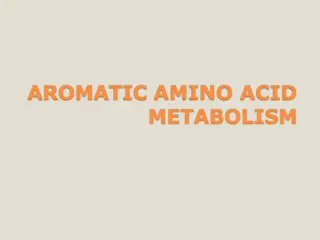
Metabolic Pathways: An Overview
Explore the concept of metabolic pathways, including anabolic and catabolic processes, ATP as the energy currency of cells, and the integrated network of chemical reactions. Learn how pathways intersect to form a purposeful Metabolic Map. Discover how precursor molecules transform into complex molecules through endergonic reactions.
Uploaded on | 0 Views
Download Presentation

Please find below an Image/Link to download the presentation.
The content on the website is provided AS IS for your information and personal use only. It may not be sold, licensed, or shared on other websites without obtaining consent from the author. If you encounter any issues during the download, it is possible that the publisher has removed the file from their server.
You are allowed to download the files provided on this website for personal or commercial use, subject to the condition that they are used lawfully. All files are the property of their respective owners.
The content on the website is provided AS IS for your information and personal use only. It may not be sold, licensed, or shared on other websites without obtaining consent from the author.
E N D
Presentation Transcript
By By Dr. Dr. Sumbul Sumbul Fatma Fatma
Understand the concept of metabolic pathway Understand the concept of metabolic pathway Identify types & characters of metabolic pathways Identify types & characters of metabolic pathways- - anabolic and catabolic anabolic and catabolic Identify ATP as the energy currency of cells Identify ATP as the energy currency of cells
All the chemical reactions taking place inside a cell are collectively known as METABOLISM All the chemical reactions taking place inside a cell are collectively known as METABOLISM Metabolism consists of: energy consuming Metabolism consists of: energy consuming (anabolic) (anabolic) pathways pathways energy producing energy producing (catabolic) (catabolic) pathways pathways
Metabolic Pathway: A multi-step sequence of chemical reactions A product of first reaction becomes a substrate for second reaction Integrated pathways: Metabolism
Different pathways can intersect, forming an integrated and purposeful network of chemical reactions Different pathways can intersect, forming an integrated and purposeful network of chemical reactions The Metabolic Map The Metabolic Map
Most pathways can be classified catabolic anabolic Most pathways can be classified catabolic anabolic Note: Pathways that regenerate a component are called cycles Note: Pathways that regenerate a component are called cycles
Precursor molecules into complex molecules Endergonic reactions require ATP Divergent process
Anabolic Anabolic Catabolic Catabolic Simple to complex molecules Endergonic Involves reductions Requires NADPH Divergent process Simple to complex molecules Endergonic Involves reductions Requires NADPH Divergent process Complex to simple molecules Exergonic Involves oxidations Requires NAD Convergent process Complex to simple molecules Exergonic Involves oxidations Requires NAD+ + Convergent process
Amphi Amphi = Dual, = Dual, amphibolic amphibolic: dual pathway : dual pathway For example, Krebs cycle is mainly a but with some e.g., synthesis of glucose from amino acids Therefore, For example, Krebs cycle is mainly a catabolic but with some anabolic e.g., part of Krebs cycle is used for the synthesis of glucose from amino acids Therefore, Krebs cycle is catabolic cycle, features, cycle, anabolic features, part of Krebs cycle is used for the Krebs cycle is amphibolic amphibolic
ATP + H2O ADP +Pi The free energy liberated in the hydrolysis of ATP is used to drive the endergonic reactions ATP is formed from ADP and Pi when fuel molecules are oxidized This ATP-ADP cycle is the fundamental mode of energy exchange in biological systems
E-rich compounds e.g., E-rich reduced coenzymes Oxidation ETC
Oxidation: Loss of hydrogen Loss of electrons Reduction: Gain of hydrogen Gain of electrons
Intracellular signals: Substrate availability Product inhibition Allosteric activators Intercellular communications: Chemical signaling (hormones): Second messenger cAMP, cGMP Ca/phosphatidylinositol
Carbohydrates & lipids proteins energy production These are amino acids Glucose most tissues Carbohydrates & lipids (mainly) proteins (little extent) energy production These are- - glucose, fatty acids and amino acids Glucose is the major metabolic fuel of most tissues (mainly) and are used for and (little extent) are used for glucose, fatty acids and is the major metabolic fuel of
Metabolism is the sum of all biochemical pathways that occur inside the cells. Metabolism is the sum of all biochemical pathways that occur inside the cells. A metabolic pathway is a multistep sequences of enzyme catalyzed reactions. A metabolic pathway is a multistep sequences of enzyme- - catalyzed reactions.
Catabolism is a convergent process that provides energy to cells in the form of ATP. Anabolism is a divergent process that consumes energy for the synthesis of complex molecules. Metabolic pathways are tightly regulated and highly integrated. Catabolism is a convergent process that provides energy to cells in the form of ATP. Anabolism is a divergent process that consumes energy for the synthesis of complex molecules. Metabolic pathways are tightly regulated and highly integrated.
ATP is the energy currency of the cells ATP is the energy currency of the cells
Sites for ATP Synthesis Electron transport and ATP synthesis are tightly coupled processes





